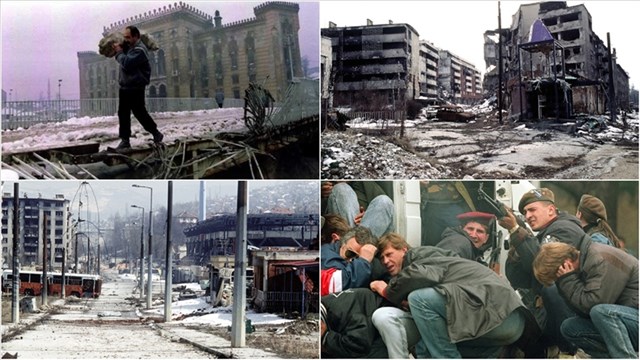
33 Years Since the Siege of Sarajevo
33 Years Since the Siege of Sarajevo
The capital of Bosnia and Herzegovina, Sarajevo, which was subjected to Serbian attacks for nearly four years during the 1992–1995 war, continues to live with the scars of the conflict even 33 years later.
On April 5, 1992, the first barricades were set up by Serbian forces in Sarajevo, the capital of Bosnia and Herzegovina, which witnessed one of the most painful wars in modern history. The first bomb was dropped on April 6, and Sarajevo remained under siege for 1,425 days.
In the lead-up to war, the European Union (EU) recognized the independence of Slovenia and Croatia on January 15, 1992, but made a referendum a condition for Bosnia and Herzegovina’s independence.
Despite Serbian threats, Bosnia and Herzegovina decided to hold an independence referendum in February 1992. Following the referendum on March 1, 1992, which led to the emergence of an independent Bosnian state, Serbian forces began preparations for the siege of Sarajevo on April 5 by placing barricades around the city.
On that same day, Serbian snipers killed two civilians, Suada Dilberovic and Olga Sucic, marking the first attack and the beginning of the siege. As Serbian forces opened fire on Sarajevo residents protesting the war, many others were wounded.
Serbs deployed 13,000 heavily armed troops on the hills and mountains surrounding Sarajevo, using both heavy and light weapons to launch a siege on the city. The Bosnian Defense Forces (Army of the Republic of Bosnia and Herzegovina – ARBiH) managed to establish a 70,000-strong army within 19 months in the besieged city. However, due to insufficient military equipment, they were unable to break the siege.
Sarajevo remained under siege until February 29, 1996
One of the most beautiful cities in the Balkans, celebrated in poems and songs, Sarajevo remained under Serbian attacks and siege until February 29, 1996.
During the siege, Serbs bombed everything they considered a living or non-living target. Serbian snipers, stationed on hills and tall buildings, especially targeted civilians, including women, children, and the elderly going about their daily lives.
At times, mortars were fired at civilians standing in bread lines or shopping at the market.
Sarajevo, which endured one of the longest sieges in history, lost 11,541 people, including 1,601 children, during the 1,425-day siege. An average of 329 mortar shells hit the city each day.
Serbs deliberately targeted Ottoman and Muslim heritage in the city, bombing historic buildings, mosques, madrasahs, and libraries.
The bloody war in Bosnia and Herzegovina ended on November 21, 1995, when Bosniak, Serb, and Croat leaders reached an agreement at the Dayton Air Base in Ohio, USA.
The Dayton Peace Agreement was initialed with the efforts of U.S. diplomat Richard Holbrooke by Bosnia and Herzegovina's first president, the late Alija Izetbegovic, former Serbian President Slobodan Milosevic, and former Croatian President Franjo Tudjman.
April 6 Incidents in Sarajevo
Known as the “Jerusalem of Europe” for hosting places of worship and people from various faiths, Sarajevo has witnessed significant events on April 6 throughout history.
On April 6, 1941, during World War II, Sarajevo was bombed by Nazi Germany. Exactly four years later, on April 6, 1945, the city was liberated from occupation following an operation by the former Yugoslav army.
During the Second World War, 10,961 Sarajevo residents lost their lives, including 7,092 Jews.
In the most recent war, Sarajevo was bombed for the first time on April 6, 1992, and remained under siege for 1,425 days.
April 6 is celebrated as Sarajevo City Day, marking the city’s liberation from Nazi occupation, while at the same time, due to its heavy historical significance, the victims of the siege of Sarajevo are also commemorated.
Even after 33 years, the memories of what happened in Sarajevo remain alive, with the public continuing to hold memorial ceremonies for the victims of the massacres in the capital.